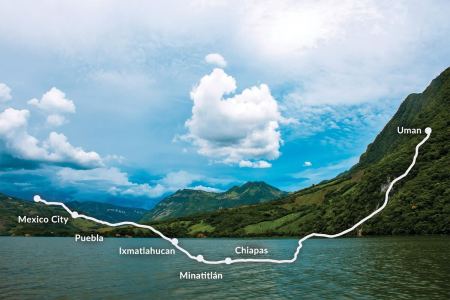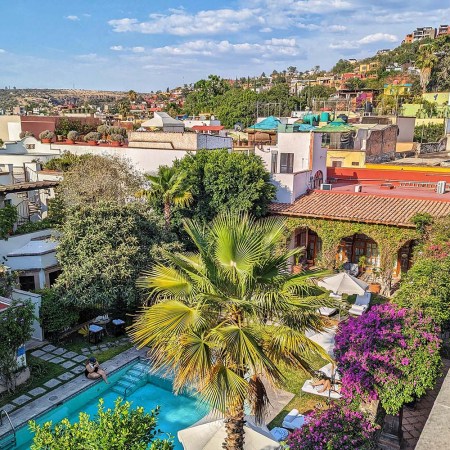The Yucutan Peninsula is home to some of the most stunning underground landscapes on the planet. The cenotes situated throughout the region feature underground and underwater landscapes that are utterly breathtaking. The cenotes around Chicxulub Crater are also one of the sites that Mexico’s government placed on a tentative list to become a UNESCO World Heritage Site. But if you’ve ever looked at images of these underground spaces and thought, “That looks a bit precarious,” you’re not wrong — and a major infrastructure project has put some of Mexico’s cenotes at risk.
An investigation by the Associated Press’s Teresa De Miguel, Megan Janetsky and Rodrigo Abd reveals that at least 122 caves on the peninsula were damaged as a result of construction work on the Maya Train. The train line, which recently began conveying passengers, is designed to — in the words of Elisabeth Malkin at The New York Times — “whisk passengers in cool comfort through colonial cities, archaeological sites, splashy resorts and tropical forests.”
Unfortunately, as the AP’s reporting points out, large-scale construction and delicate underground spaces don’t mix terribly well. At issue, the reporters write, is the route that the Maya Train takes, which was originally set to go through more residential parts of the country but was moved under pressure from the tourism industry.
“They are building upon a land that is like Gruyere cheese, full of caves and cavities of different sizes and at different depths,” Northwestern University geologist Emiliano Monroy-Ríos told the Associated Press. And while the train line might not be great for the caves, the caves might also be bad for the train line — in terms of the risk that the literal ground below train tracks could cave in.
A Cross-Country Road Trip, From the Yucatán Peninsula to Mexico City
One man’s journey across Mexico’s southeastern projectionYou might read this and wonder why none of this showed up on the environmental review that seems to be a standard feature of many large-scale infrastructure projects. The answer is simple: there wasn’t one for this project. The AP reports that the current government broke the law by not carrying one out. With Mexico’s next election scheduled for June 2, one large question looms over the results: will a new president take any steps to avert a potential disaster, be it environmental or infrastuctural?
This article appeared in an InsideHook newsletter. Sign up for free to get more on travel, wellness, style, drinking, and culture.



















